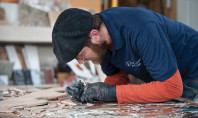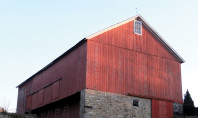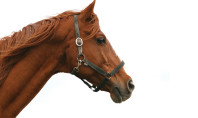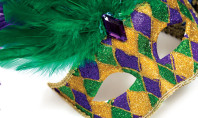Easton – Before the 20th Century
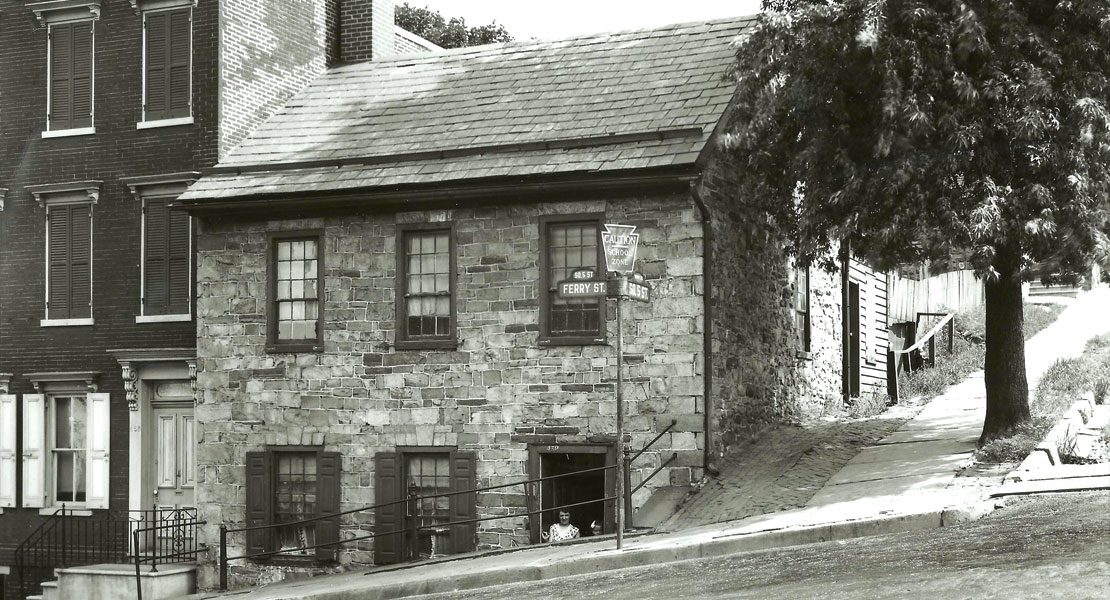
The Lehigh Valley’s third largest city, Easton is located at the confluence of the Lehigh and Delaware Rivers, just across the Delaware from New Jersey.
Although not incorporated into a borough until 1789, Easton’s history stretches back to the mid-1700s when Thomas Penn, son of William Penn, acquired the land from Lenni Lenape natives through the now-infamous Walking Purchase. In 1752, at Thomas Penn’s request, the town was laid out in the grid-style of old Philadelphia. Names were chosen in honor of Thomas’s newlywed wife, Juliana Fermor, daughter of Lord Pomfret of Easton-Neston, Northamptonshire, England. Aside from the obvious “Easton” and “Northampton” references, Second Street was also originally named “Fermor Street,” Third Street was originally “Pomfret Street” and Fifth Street was originally “Juliana Street.”
By the early 1830s, Easton was considered the “fastest growing, busiest and wealthiest town in the region…”
Throughout the Revolution, Easton served as a key military center for the Continental Army. In December of 1776, the old courthouse and the First Reformed Church on North Third Street were transformed into medical facilities to treat soldiers injured at the Battle of Trenton. Following the disastrous Continental defeats at Brandywine in September 1777 and Germantown in October, hundreds more wounded were brought to Easton to recover. It is even believed that during the harsh winter of 1777-78, General George Washington left his quarters in Valley Forge and traveled to Easton to visit with soldiers convalescing here.
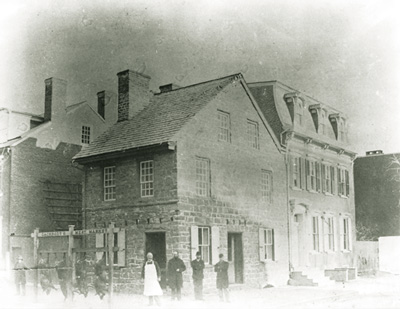 In the years following the war, Easton’s strategic riverside location helped spur vast economic growth. The completion of the canal system in the early 1800s cemented the town’s standing as a critical transportation center by connecting the farming, coal and iron regions of northern and western Pennsylvania with the urban centers of New York City and Philadelphia.
In the years following the war, Easton’s strategic riverside location helped spur vast economic growth. The completion of the canal system in the early 1800s cemented the town’s standing as a critical transportation center by connecting the farming, coal and iron regions of northern and western Pennsylvania with the urban centers of New York City and Philadelphia.
The large movement of goods and commerce also attracted industrial development within Easton. Between 1790 and 1830, the town’s population grew from just under 700 to more than 3,500. As a product of this rapid growth, Easton established its first fire company in 1807 and its first public water company in 1817. By the early 1830s, Easton was considered the “fastest growing, busiest and wealthiest town in the region” with an amazing “five churches, an academy, a public library, two banks, five weekly newspapers, thirteen lawyers, seven physicians, three drug stores, thirty-three general retail stores, two volunteer infantry companies, three tanneries, four distilleries, one brewery, two sawmills, seven flour-mills and nearly
six-hundred dwellings.”
Around this same time, a small group of Easton citizens established what would arguably become the town’s most acclaimed institution; Lafayette College was founded in 1826 and named in honor of the Revolutionary War hero Marquis de Lafayette, a French general who famously fought alongside Washington during the battle of Brandywine. In 1832, the college purchased property on what would become known as “College Hill,” an elevated area just across the Bushkill Creek on Easton’s northern side, and began holding its first formal classes.
This combination of bustling commerce, robust industry and higher education quickly caused Easton to develop a reputation for having a “cosmopolitan” atmosphere. As a result, the town appealed to many residents from larger cities. In particular, throughout the mid-1800s, wealthy Philadelphians used Easton as a minor resort town. Often making the trek via stagecoach up Route 611, this early form of tourism led to improved ground travel and earned Easton the distinction of being the first town most people visited upon arriving in the Lehigh Valley.
On January 12, 1887, Easton was officially granted a city charter. With a population of approximately 11,000 residents, the city was at this time in the throes of a second wave of industrialization. Among the largest and most significant manufacturing giants to emerge was the R&H Simon Silk Mill, located along the Bushkill Creek near 13th Street. Originally opened as the Easton Silk Company in 1883, by the turn of the 20th Century, the mill employed nearly 2,000 people and was the world’s leading producer of black silk ribbon. As evidence of its great success, the mill’s owner, Herman Simon, built a magnificent High Renaissance French Chateau style home on North Third Street. Featuring stunning Italian limestone and a granite base, the mansion was completed in 1902 at a cost of $250,000 – or $6.5 million in today’s money.
Today, Easton is home to just under 30,000 people. Although remnants of the city’s heavy industrial past are still visible, the economy has primarily transitioned to a more diverse mix of industrial, commercial and tourism-related businesses. The silk mill, which closed in the early 1980s, now hosts the annual film festival “Movies at the Mill” and, like several other now-empty sites, is at the center of a concerted effort for adaptive revitalization.
But while some areas are in the process of transition, other segments of the city have been carefully preserved. Easton’s historic district is a member of the National Register of Historic Places and boasts several beautifully maintained sites. The Northampton County Historical and Genealogical Society, which is headquartered in Easton and operates the Sigal Museum on Northampton Street, also maintains the historic Bachmann Publick House, Mixsell House and Jacob Nicholas House as by-appointment museums.
Historic Sites & Notable Facts
• Easton’s oldest remaining building, the Bachmann Publick House (located at 169 Northampton Street), was originally built in 1753. Benjamin Franklin, John Adams and Revolutionary War General John Sullivan are among its famous patrons.
• George Taylor, a signer of the Declaration of Independence, lived in Easton during the later part of his life. Taylor was chosen by the Pennsylvania delegation to replace a representative who refused to ratify the document. His company, Durham Ironworks of Bucks County, was the first Pennsylvania ironworks to produce shells and cannonballs for the Continental Army. Taylor died in the Parson-Taylors house on the corner of Fourth and Ferry Streets in February of 1781 and is buried in the
Easton Cemetery.
• Easton’s center square is home to the nation’s oldest continuous open-air farmers market. Established in 1752, the market continues to run May through November. During the winter months (December through April) it moves indoors on Northampton Street.
• Pennsylvania’s last public hanging took place in Easton on October 4, 1833. While thousands of spectators watched, Charles Getter, who had been found guilty of murdering his wife, was executed on a small island in the middle of the Delaware River, just north of its confluence with the Bushkill Creek. Today, the island is known as Getter’s Island.
• Easton is home to Northampton County’s oldest daily newspaper; The Easton Daily Express printed its first issue on November 5, 1855. Over the next 100 years the paper’s name was shortened to The Easton Express and then simply The Express before eventually merging with the Globe-Times of Bethlehem to become The Express-Times in 1991.
• Built in 1895-96, the Northampton Street Bridge that connects Easton to Phillipsburg was designed by James M. Porter III, a noted American civil engineer and grandson of Lafayette College founder James Madison Porter. Although many people know it today as the “Free Bridge”, it actually charged a toll until the early 1920s.





